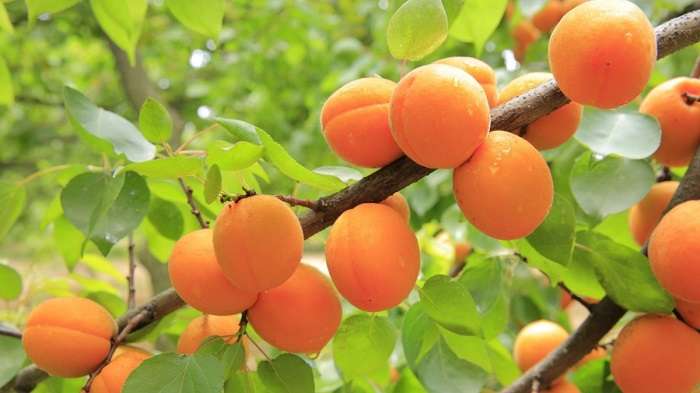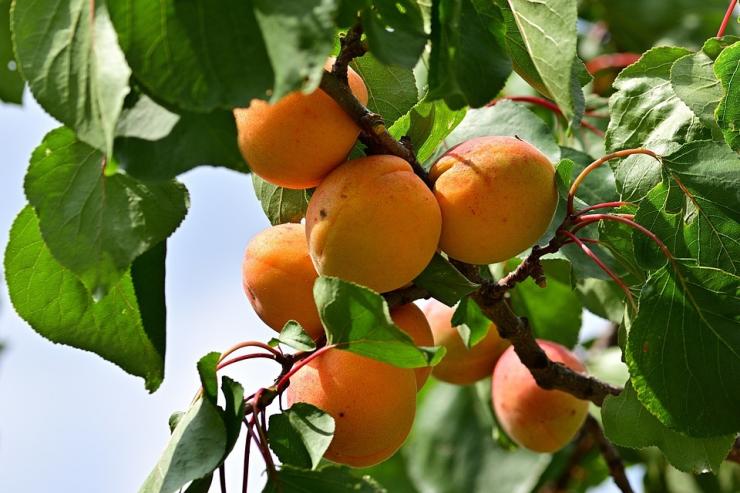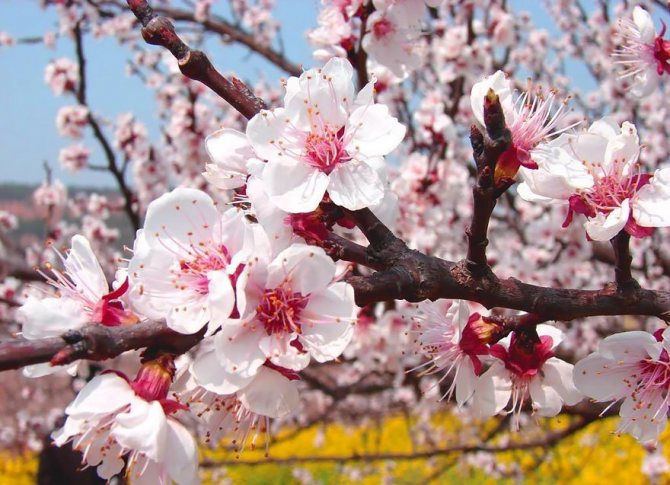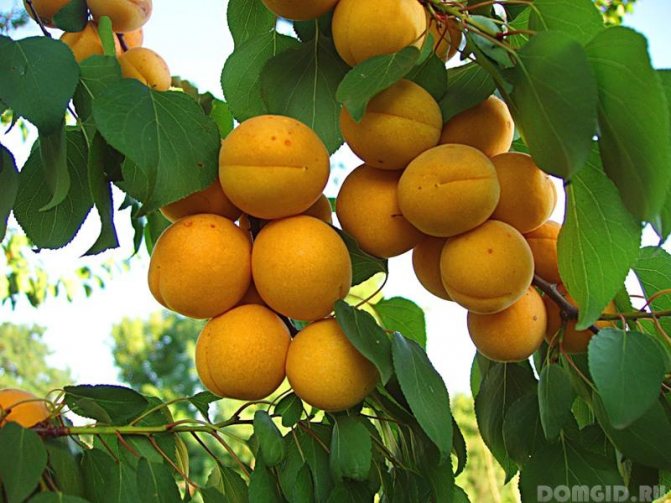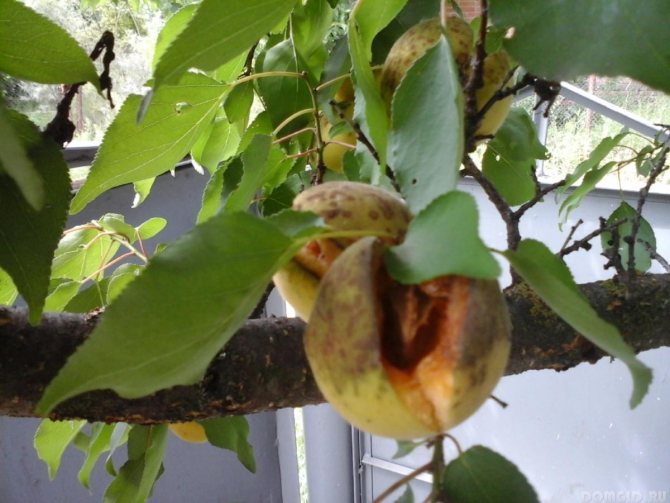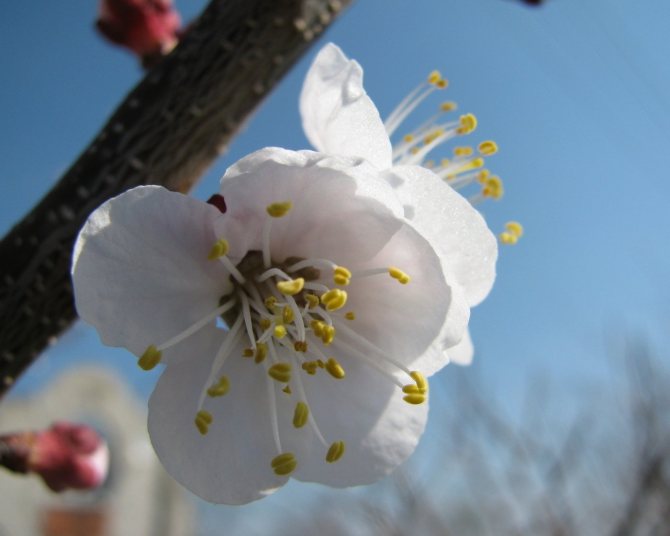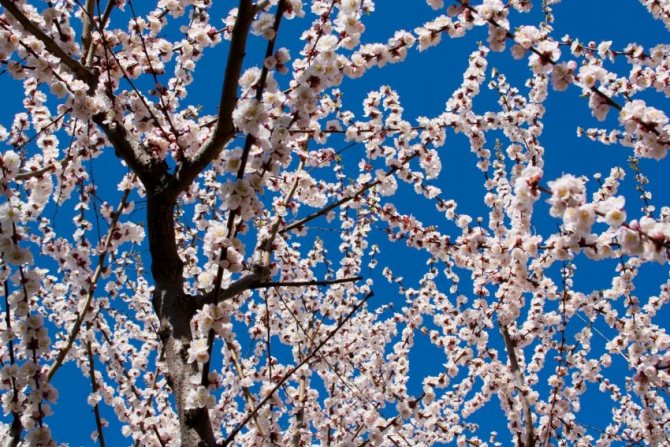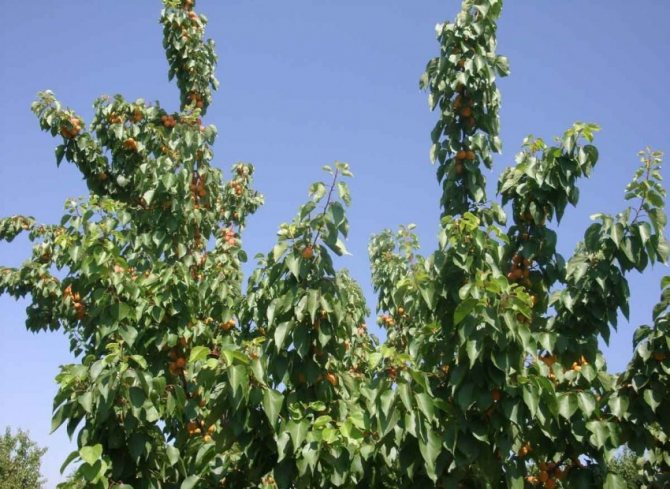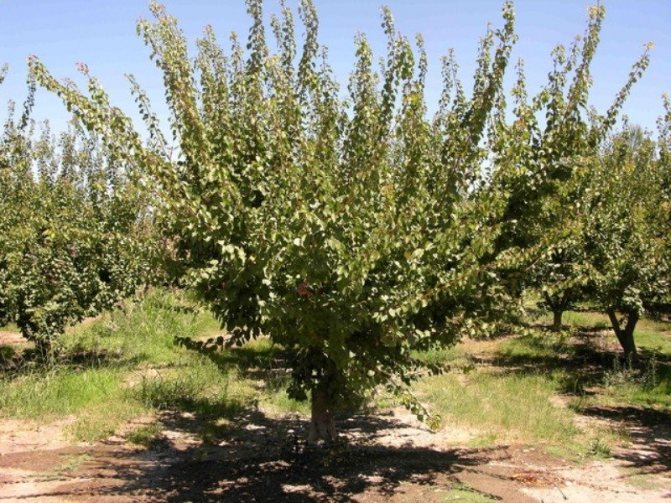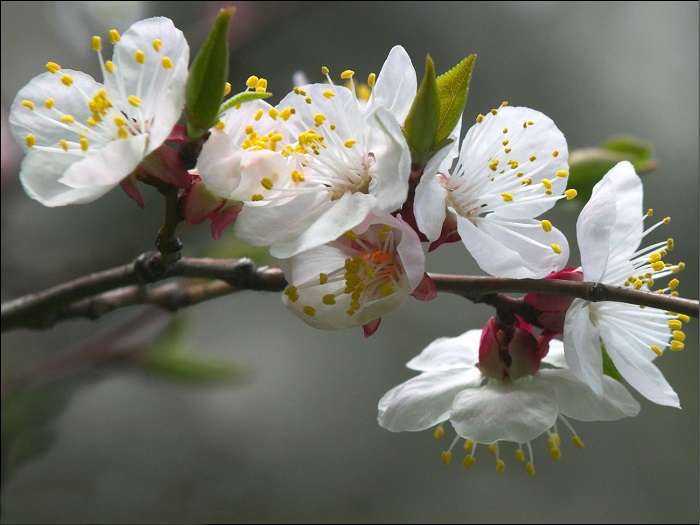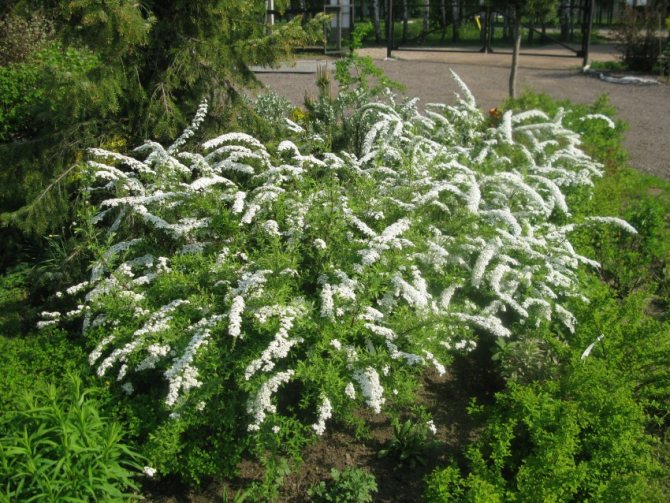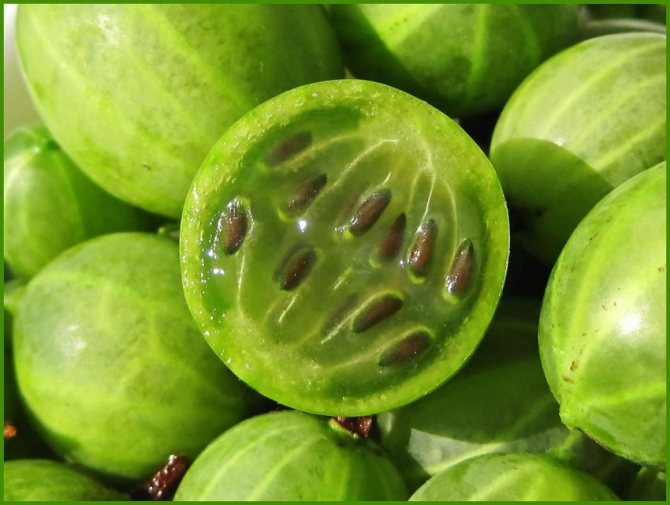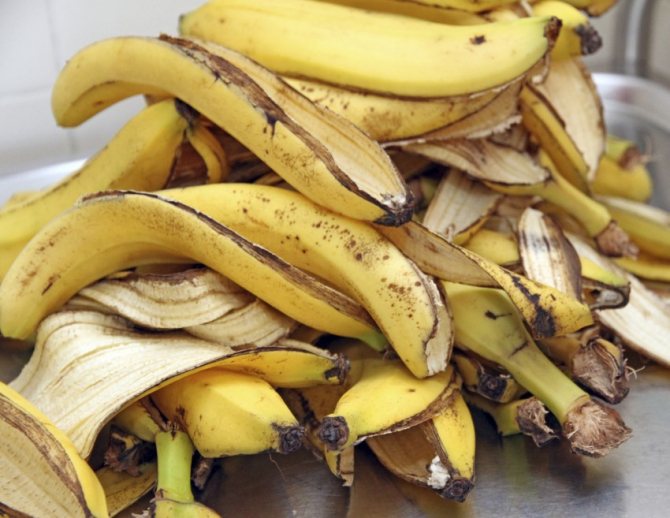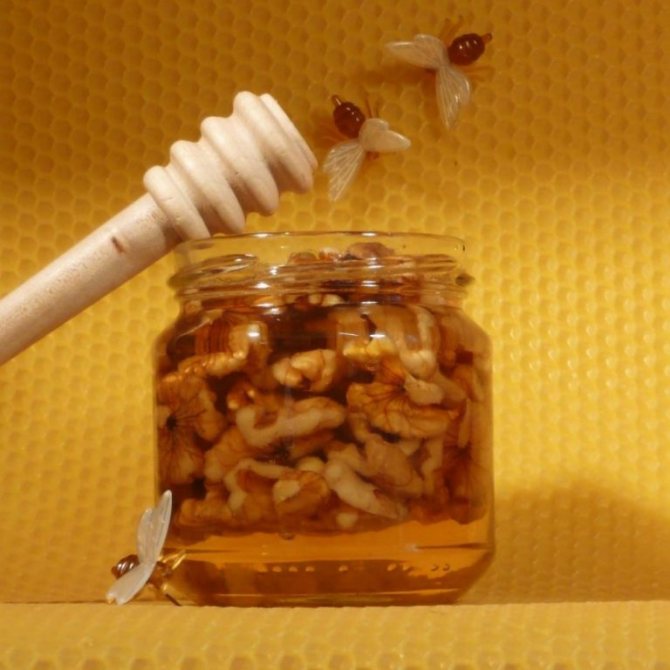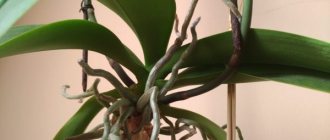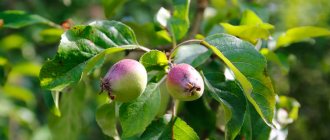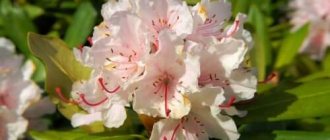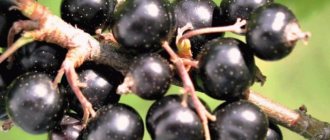In the practice of growing apricot, there are often cases when in spring it either does not bloom at all, or after flowering the ovary does not form, and as a result, there are no fruits. Why this is happening and what to do to make the apricot bear fruit every year - the editors of HozGround.guru will put everything on the shelves.
And the first thing worth paying attention to is the age of the culture - there is a possibility that the fruiting period has simply not yet arrived.
Apricot care: general rules
For two years after planting apricot seedlings, the near-stem area should be constantly loosened and mulched. Weeds are cleaned regularly. They loosen the earth to a depth of 6-8 cm, because if you drip deeper, you can touch the root system.
Organic and phosphorus-potassium fertilizers are usually not applied to the soil until the beginning of fruiting.
As soon as the apricot tree begins to bear fruit, the following fertilizer composition will need to be applied to the soil annually:
- Ammonium nitrate - 30 g.
- Superphosphate - 8 g.
- Potassium salt - 20 g.
The calculation is done for 1 square meter of the trunk circle.
Nitrogen fertilizers are applied every year at 20-30 g per 1 square meter. This is done in the spring and after fruiting, in half the dosage.

Apricot
Despite the importance of the presence of nitrogen in fertilizers, its excess leads to the following negative consequences:
- the resistance of the apricot to diseases decreases;
- leads to gum flow;
- fruits ripen with a delay;
- superlong increments appear (up to 100 cm).
On a note. If the region is dominated by heavy acidic soils, then it will be useful to add calcium.
For organic fertilizers there is a term - every 3-4 years, but if there is turf, they are not needed at all. Liquid fertilizers are recommended. If they are dry, then they are poured into the grooves just before watering.
Note! Abundant watering will be necessary during the period of hardening of fruit seeds, their active growth and growth of shoots.
If the tree is overloaded with fruits, then next year the harvest will be meager and with small apricots. To avoid this, you need to prune the crown every year in the spring. And also manually thin out the fruits after their set.
Phytosanitary hygiene of the apricot tree includes the following actions:
- Diseased branches and shoots are removed and subsequently burned.
- The wounds are cleaned, disinfected and putty is carried out.
- A carcass, a sick and bad harvest is harvested and also burned.
- They do the same with diseased leaves.
- Every year in the fall or as soon as early spring comes, the stem of the apricot is disinfected with lime.
Soil analysis
Fruiting of a plant will not occur if the characteristics of the soil in which it is planted do not correspond to the needs of the root system. Nutrient and loose soils are suitable for the fruit tree. If the site does not have land with the required qualities, annual measures are taken to improve them:
- apply fertilizers from rotted manure, sand, organic waste by burying around the tree trunk;
- periodically loosen the kidney to a depth of 15 cm for better water penetration;
- if the soil has high acidity, it is necessary to reduce its level by adding a lime solution during irrigation.
Determining the level of soil acidity without special equipment or analysis will help the proven method of agronomists. Beets are planted on the site. After germination, the tops are examined. If it has a deep red hue, acidity is present, if there is no redness, the earth has neutral characteristics.
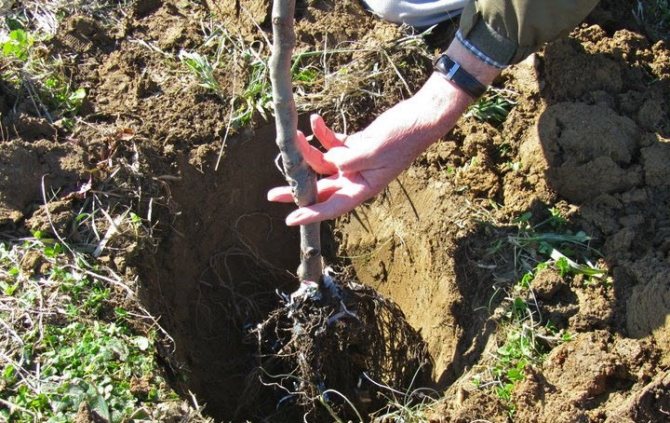

When apricot begins to bear fruit
In which year the apricot will begin to bear fruit after planting is carried out depends on a number of factors.
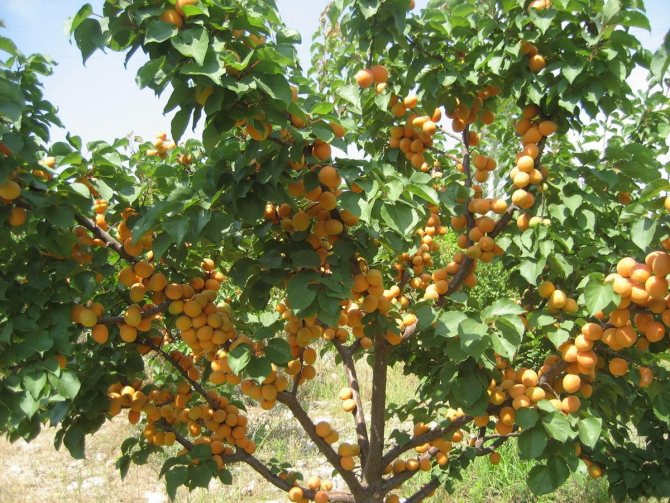

Apricot bears fruit
Why the plum does not bear fruit
Firstly, this is the planting method. If the plant is planted with seedlings, the first fruits will appear in 3-4 years.
Note! As a rootstock for an apricot tree, not only wild, but also other stone fruits, such as cherry plum or plum, are suitable. The main thing when planting, the root part of the stock should not go too deep into the ground, it is necessary that it rises 5-6 cm above the soil level.
The second important condition early fruiting of apricot, is the right choice of planting place. The seedling must be protected on the north side so that the rootstock is not exposed to cold winds. The groundwater at the planting site should be at a decent distance from the root system of the tree. Apricot does not like waterlogging, otherwise its roots will rot and the culture will die.
Thirdly, the time of fruiting will depend on the variety of the apricot. In fact, there are many varieties of this plant. Therefore, when purchasing seedlings of a particular variety, one should focus on the region, climatic conditions and quality indicators of the plant.
Important! If the gardener ventured to plant an apricot with a bone, then the first shoots will appear in a year, respectively, the first crop will be able to be harvested only after 5-6 years.
Features to consider
Before planting a fruit tree, it is worth considering the features of the site. Productivity depends on the type of soil - apricots take root well on light loams, slightly alkaline, low-carbonate soils with neutral acidity. The soil must contain humus, potassium, nitrogen and fluorine. Apricot plants began to be cultivated in the South, so the features of the southern region would be ideal for him:
- the location of the GWL at an elevation of 10 m;
- uniform illumination from all sides;
- compulsory wind protection - hedge.
Do not forget about an integrated approach to cultivation - feeding, pruning the crown, regular watering.
Common cultural problems
Why apricot does not bear fruit
Why is there sometimes no fruit on an apricot? How to make a crop bear fruit?
Cherry does not bear fruit: what to do
There may be several problems:
- Heavy clay soils. In this case, organic waste is embedded in the near-trunk circles, manure, sawdust and sand are introduced, in the fall, summer and spring, the soil is dug up. With increased acidity of the soil, it is "deoxidized" with the help of lime.
- Lack of moisture.
- Inability to handle fertilizers. It is imperative to add manure to the tree, without exceeding the norms. It contains nitrogen necessary for the fruiting of apricots. Organics will be needed in the spring. In summer, instead of nitrogen, phosphorus-potassium fertilizers are more important.
Apricot does not bloom
As you know, if there are no flowers on an apricot, then there will be no fruit either. Various reasons are possible, up to genetic failures.
Important! Seedlings should be purchased only in proven places. Inquire immediately about the variety and the expected beginning of fruiting.
The varietal characteristics of apricots vary greatly. For example, one variety begins to bear fruit after 3-4 years, while another crop will delight the first fruits only after 5 years.
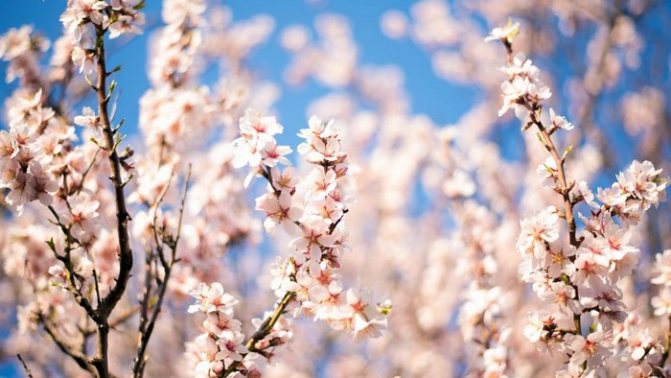

Blooming apricot
An old tree that is more than 40 years old will not be able to bloom and bear fruit.Nothing can be done about it. You just need to plant and grow a new plant.
Other factors leading to apricot not picking up color include:
- poor growth conditions;
- diseases;
- rare, irregular feeding.
Apricot blooms but does not bear fruit
It happens that there are plenty of blooms in spring, but there are no fruits. This phenomenon is called barren flowers.
There are several reasons why an apricot blooms but does not bear fruit:
- no pollination;
- the appearance of diseases and pests;
- adverse weather conditions.
How to deal with this? It is worth disassembling the points.
If the tree is self-fertile, then other varieties of apricots (self-fertile) are planted nearby. Self-fertile crops do not have problems with pollination. But sometimes it happens that even in the presence of other varieties of apricot, pollination does not occur. Most often observed in cold rainy weather, when the activity of bees decreases. To attract insects, flowers are planted between the trees, which must be planted at the same time as the apricots. Some summer residents use the method of spraying crops with honey solution.
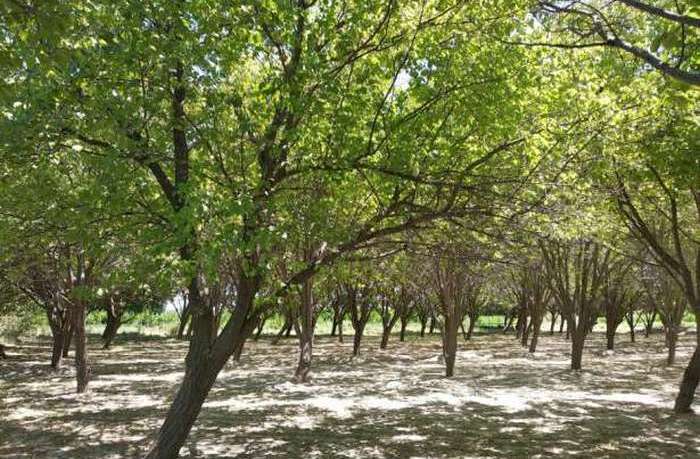

Barren apricot
The most common apricot diseases include moniliosis. With a monidial burn, the flowers first wither, and then the branches themselves dry out, it is no longer necessary to say that the tree will bear fruit. Only prophylactic spraying with a medicine containing copper will help. This is done twice a year: in the fall, after the leaves have fallen, and in the spring, before the buds swell. Also, the tree is treated with Bordeaux liquid, cuproxate, champion, chorus. If it was not possible to get rid of the disease completely, then a stronger drug, topaz, is used.
Important! Absolutely all branches that have dried up as a result of moniliosis must be cut down and burned.
Pest Control - The most common of these are aphids and flower beetles. In order for the apricot to start flowering, the culture at the stage of the formation of a pink bud is treated with Confidor.
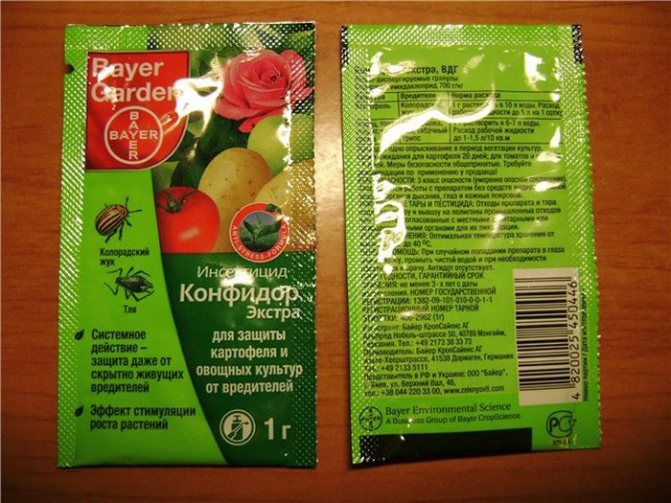

Confidor
Separately, it is worth discussing what to do in bad weather. For good flowering, apricot needs certain weather conditions. In a sleeping state, he is not afraid of frosts. But warming in January and February can promote early awakening of the plant. The root begins to consume more oxygen, but this process is hindered by a layer of snow. As a result, the bark and roots of the apricot are simply cut out by the spring. The gardener's task in this case is to remove snow from the trunk circle and not plant seedlings in the holes.
Early warming is also contraindicated for apricots, as they begin to bloom, and night frosts will prevent fruits from forming. In this case, it is recommended to plant frost-resistant varieties of apricots. But you can also shift the flowering time if you spray the culture with auxin solution in the fall. In February, the tree is often treated with urea and copper sulfate (for 10 liters of water, 700 g of urea and 100 g of copper sulfate will be needed).
There are flowers, but no fruits - reasons and solutions
Lack of fruiting after flowering is also a very common problem. Of the reasons, the following are distinguished:
- self-fertile or poorly pollinating variety;
- absence of pollinating insects;
- weather.
Everything is clear with the last point: drought and heat, like a rainy cold summer, have a detrimental effect on fruit formation. Rains prevent pollinating insects from flying, and cold snap and, on the contrary, sudden heat, affect the quality of pollen.
Choosing a self-infertile variety
Apricot varieties are divided into pollinated with their own pollen into:
- self-fertile varieties < (self-pollinating, self-fertile);
- self-sterile (self-sterile), requiring the proximity of the pollinator;
- partially self-fertile.
It is believed that apricot varieties are predominantly self-fertile, self-fertile are mainly hybrid forms and few varieties.
Stably self-fertile varieties have a high percentage of ovary - 20-60%, self-fertile 0-10%, partially self-fertile - 10-20%.
In fairness, it should be noted that self-fertile forms also need cross-pollination, and the description often indicates the level of self-fertility - stable, partial, low or high. Moreover, this indicator is not constant. In different years and in different climatic zones, the variety can demonstrate a different percentage of self-fertility.


Varieties of the European group have a high percentage of self-fertility. Self-infertile, requiring pollination - varieties of the East Asian, Central Asian group.
Self-infertile varieties definitely need pollination, and often help. So, it is better to plant apricot trees in groups, while it is necessary to breed varieties with similar flowering periods. In the garden, 2-3 or even 4 pollinator varieties are usually planted within 60-100 m from each other.
The second method of solving the problem will be grafting into the crown of a branch of another variety, which acts as a pollinator. As a rule, the best pollinators are indicated by the originator - or as determined by the method of sampling by the practitioner gardener.
The following table will help you choose a potential pollinator for popular apricot varieties.
| Variety | Recommended pollinators |
| Academician | Amur, Khabarovsk |
| Iceberg | Lel, Alyosha, Tsarsky |
| Eastern Sayan | Kantegirsky, Kirovets, Sibiryak Baikalova |
| Countess | Monastyrsky, Northern Triumph, Favorite, Lel |
| Mountain Abakan | Kantegirsky, Sibiryak Baikalova |
| Lel | Alyosha, Aquarius, Iceberg |
| Best Michurin | Northernmost |
| Saratov Rubin | Gourmet, Dessert Golubeva, Northern Triumph |
| Sayansky | Kirovets, Gorny Abakan, Sibiryak Baikalova |
| Seraphim | The most northern, Khabarovsk |
| Spicy | Chelyabinsky Early, Kichiginsky |
| Favorite | Monastyrsky, Lel, Tsarsky |
Lack of insect pollinators
The problem arises in rains, windy weather, with a cold snap or with heat - all this affects the years of pollinating insects, on which the presence of an ovary depends.
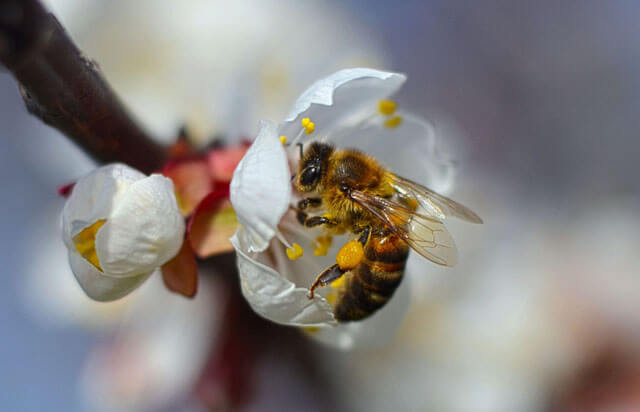

The solution will be artificial pollination - the transfer of pollen from one or several pollinating plants. It is carried out three times: on the 2-3 day of flowering, during mass flowering, at its end. It is important to spend it in the morning or in the evening. For artificial pollination in the garden, you can use brushes, fur puffs or the shaking method.
Recommended reading - how to properly carry out artificial pollination.
If the apricot is in no hurry to bloom, does not please with fruits, it may not be the tree, but agricultural technology. And the ax is not the best way to correct the situation. Reconsider the cultivation methods, and he will delight you with a good harvest.
Preventive measures
As you know, prevention is the best treatment. To achieve a good harvest, you will need to follow these growing rules:
- choose the right apricot variety that grows best in the selected climatic conditions;
- observe all conditions for good tree growth;
- pruning branches on time;
- carry out preventive work to destroy pests;
- to carry out disease prevention;
- add fertilizers to the soil according to the recommended rates.
Why the apple tree does not bear fruit
Apricot trees require some maintenance. But if you adhere to the above rules, then you can avoid many problems in the future.
Important! When buying seedlings, you need to find out more information about the variety. Additional knowledge can be obtained from relevant literature or the Internet.
Watering the plant
Problems with the formation of fruits can begin in the case of a lack of moisture. Consider the watering regime required for normal fruit formation:
- one-time watering provides for the introduction of at least 2-3 buckets of clean water from the tree trunk;
- the tree is watered from the beginning of spring, until flowering and budding;
- plants need an abundant drink during the period of active flowering, ripening of fruits and after harvesting;
- it is recommended to complete the watering season in October, before wintering;
- apricot does not tolerate stagnant water at the root system. Do not add water after rain and plant in soil with a close occurrence of groundwater.
To maintain moisture at the root in dry weather, experienced gardeners recommend mulching the base of the tree with grass, hay, and peat.
Answers to common questions
What to do next if the apricot has bloomed for the first time?
If the gardener wants to enjoy a quality harvest, then before the apricot tree begins to bloom (when the phase of "rose buds" has come), in order to improve fruitfulness, it should be sprayed with an insecticide (for example, mospilan). After the end of flowering, repeat the treatment. This procedure will be beneficial for all stone fruits.
Will one apricot tree bear fruit?
It is not customary to distinguish apricot seedlings by gender. But there are varieties of this culture that need a pair for pollination. Therefore, when purchasing planting material, it is imperative to check with the seller which variety is being sold and how it is fertilized. If other varieties of apricots and stone fruits grow in the garden, then you should not worry about this.
From all that has been said, we can conclude that it is not difficult to achieve fruiting of an apricot if you know the rules of care. We must remember about pests and diseases. So that they do not attack the tree, for preventive purposes, the culture should be sprayed with Bordeaux liquid or other insecticides. It is important to make top dressing on time and with high quality. Today apricots can be grown in most of Russia. There are problems with culture, but there are no insoluble situations.
The variety did not enter fruiting
Sometimes, depending on the variety, the apricot can delay fruiting for a couple of years.
For example, varieties Chelyabinsk early or Kichiginsky will give first fruits only in the fifth year. __________________________________
These are the varieties that are recommended for growing in the Middle Lane.
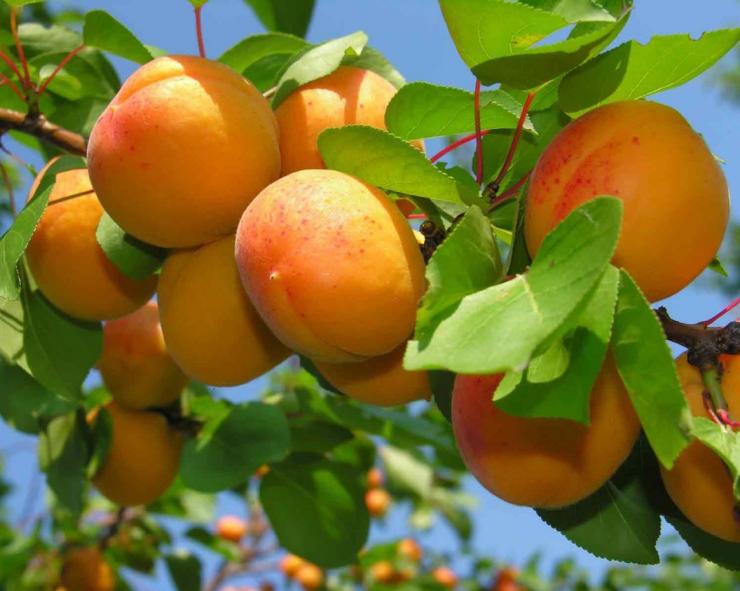

Photo: apricot variety Kichiginsky
Top dressing of young trees
The answer to the question of why young apricots do not bear fruit properly may lie in an insufficiently rich soil composition. In this case, it is necessary to apply a complex of fertilizers:
- feeding plants with manure is recommended in the spring during the period of fruit formation;
- in summer, fertilizers containing phosphorus and potassium are used.
In the organic method of growing apricot trees, chemical fertilizers are replaced with chicken droppings and ash. It is important to maintain a balance of nutrients in the soil to ensure the normal development of fruit trees.


Reason 4: the apricot tree is frozen
Apricot is one of the most thermophilic stone fruit crops. Therefore, it is extremely sensitive to temperature conditions. Not only should you initially choose a variety that is zoned specifically for our not so hot latitudes, and then plant a tree in a warm, sunny area, you also have to take into account the vagaries of the weather.
Frosty, especially snowless, winter, as well as a sharp change of cold with a thaw and vice versa, can disrupt the formation of flowers - the flower buds simply freeze through, and there is nothing to bloom in the spring. The same is true in autumn - a sudden transition from a lingering warm drizzle to real frosts is fatal to the tree.
The same thing in spring - sudden changes in temperature and spring frosts are quite capable of depriving you of your harvest. The temperature of the ovaries and apricot flowers is deadly as early as –1-2 ° С.
What to do?
Stimulate later flowering - for example, by spraying trees in the spring or summer pruning. In the first case, in early spring at a temperature of at least 5 ° C, the apricot is sprayed with a 3% Bordeaux liquid (at the same time, this will protect against fungus). In the second, immediately after harvesting the fruits in August, annual growths are shortened by 1/3 and excess branches are removed.And, finally, if your winters are harsh, you need to provide the tree with reliable protection for this period - to wrap it up in a kind of "blanket".
Crown formation
Formative pruning is essential when the young tree is developing. An apricot seedling tends to grow rapidly upward, and does not always independently form a sufficient number of lateral shoots. Because of this, there is no appearance of fruit-forming flowers. To form a crown of the correct shape, it is necessary once a year, preferably in the spring before flowering and budding, to carry out the following types of pruning:
- shaping - creates a beautiful crown;
- sanitary (removal of damaged shoots);
- anti-aging (required once every 3-4 years);
- regulating (controls the number of side shoots).
A combination of all types of pruning and their application according to the above algorithm will help to form the correct crown. The abundance of lateral shoots guarantees a large number of flowers and ovaries.


